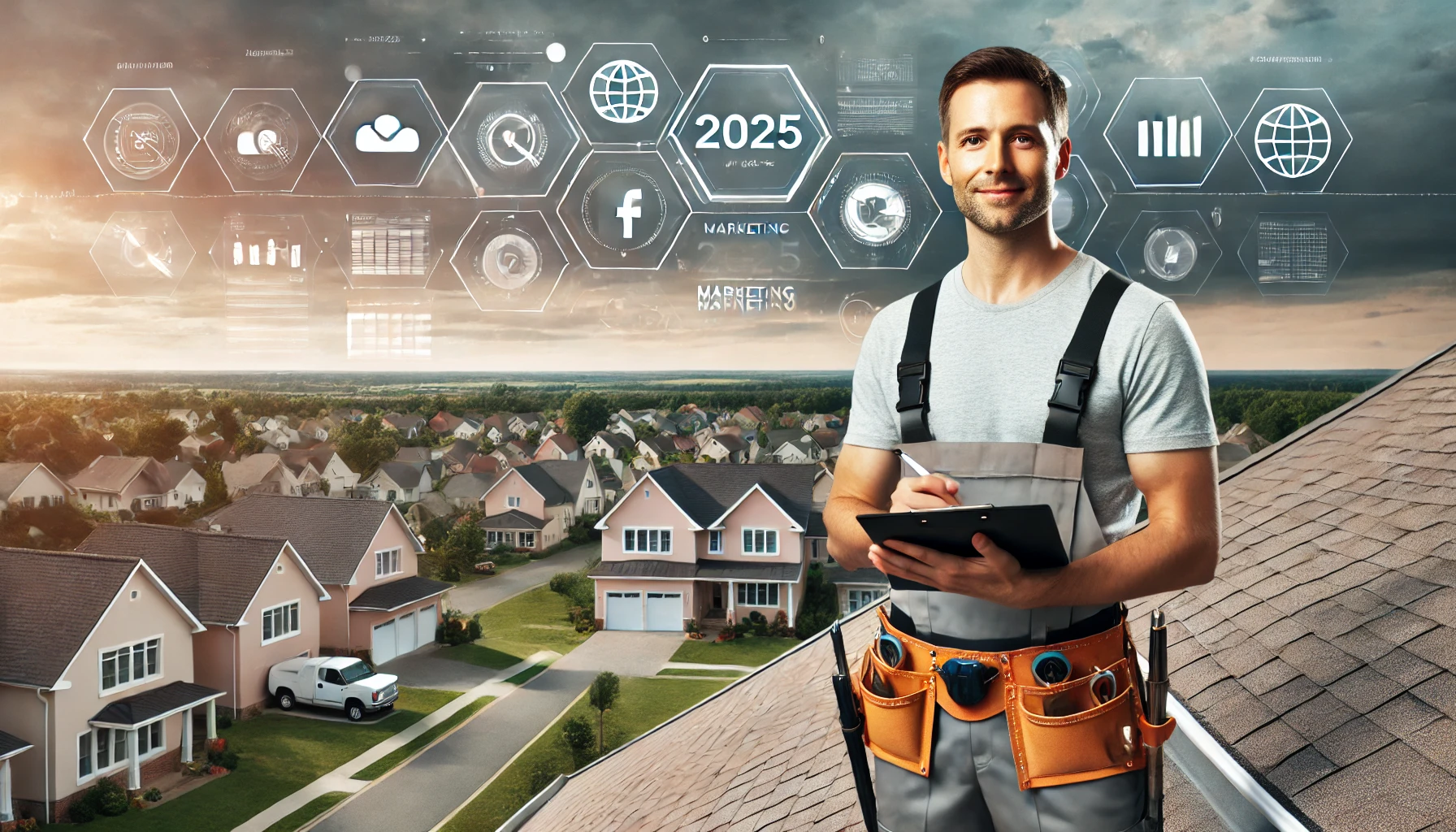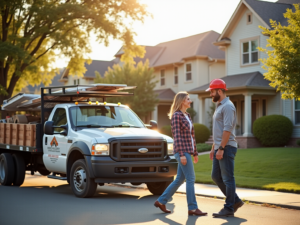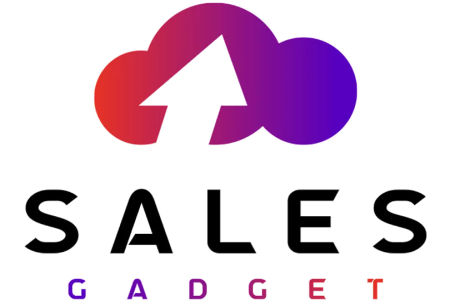In 2025, the residential roofing market across the United States is more competitive than ever. Homeowners expect quick turnarounds, reliable work, and transparent communication—especially when it comes to storm damage and insurance claims. Whether you offer insurance-based roofing services or retail/cash payment options, the right marketing strategies can help you stand out in multiple local markets, foster trust, and ultimately boost your bottom line.
Understanding the 2025 Residential Roofing Landscape
Digital Transformation and Customer Expectations
More than 80% of homeowners start their roofing research online, looking for reviews, credentials, and educational resources. They also expect fast and friendly communication—whether that’s live chat, text messaging, or responsive email support.
Insurance and Storm Damage Focus
With extreme weather events on the rise, homeowners increasingly rely on insurance claims to cover roofing work. Marketing that highlights your expertise in navigating insurance policies and handling storm-related damage appeals directly to this growing need.
Retail/Cash Payment Options
Not all homeowners opt to file an insurance claim. Positioning yourself as a versatile, convenient roofer who accepts retail/cash payments can open the door to a broader client base.
Nationwide Coverage, Local Touch
Serving multiple states or the entire U.S. means you need a national brand presence with localized messaging. Tailoring your strategies for different regions fosters a sense of community trust and addresses climate-specific roofing needs (e.g., hurricane-prone coasts vs. hail-heavy Midwest).
Master Local SEO at Scale
1. Optimize Google Business Profiles for Multiple Markets
- Create a GMB listing (Google Business Profile) for each major service area.
- Keep Name, Address, and Phone (NAP) information consistent. This builds credibility and helps with local search rankings.
- Upload before-and-after photos of roofing projects, especially showcasing storm-damaged roofs you’ve repaired.
2. Local Keyword Research
- Focus on high-intent phrases like:
– “Residential roof repair near me”
– “Storm damage roofing experts in [City/State]”
– “Insurance claim roof repair in [City/State]” - Integrate these keywords naturally in titles, headings, and meta descriptions.
3. Manage Local Citations
- National Directories: Ensure you’re accurately listed on platforms like HomeAdvisor, Angie’s List, and Yelp.
- Local Directories: Each state often has unique directories or chambers of commerce—don’t overlook them.
- Regularly audit listings to maintain consistent contact information.
Supercharge Your Paid Advertising
1. Google Local Service Ads (LSAs)
- Google Guaranteed: LSAs display at the top of search results with a badge of trust, particularly impactful for home services.
- Service-Specific Targeting: List “Storm Damage Roof Repair” or “New Roof Installation” to capture high-intent leads quickly.
2. Paid Search (PPC) Campaigns
- Geo-Targeting: Set your ads to show only in areas you serve. If you cover the entire U.S., segment your campaigns by region for better budget control and performance tracking.
- Insurance vs. Retail Keywords: Group your ads by specific user intent (e.g., “Roof repair with insurance claims” vs. “Cash payment roof replacement”).
3. Social Media Ads
- Facebook & Instagram: Ideal for targeting homeowners by age, location, and interests.
- Highlight Visual Content: Promote short videos showing storm-damaged roofs pre- and post-repair, or an overview of your insurance claim process.
4. Retargeting to Seal the Deal
- Follow Up: When a potential customer visits your site or starts an online quote form, retarget them with ads reminding them of your expertise.
- Message Match: Ads should directly address the homeowner’s last interaction (e.g., “Still need help with your insurance claim?”).
Use Content Marketing to Build Trust
1. Educational Blog Posts
- Topics:
– “How to Navigate Insurance Claims for Roof Repairs”
– “Top 5 Signs of Storm Damage Every Homeowner Should Know”
– “Cash vs. Insurance for Roof Replacement: Which Is Right for You?” - SEO-Friendly: Use headings, bullet points, and keyword-rich subtopics to improve visibility on search engines.
2. Video Content for Approachability
- Short Clips: Show a walk-through of an insurance claim process or a step-by-step roof inspection.
- Homeowner Tips: Weekly or monthly video tips on maintaining roofs, especially after severe weather, position you as a go-to expert.
3. Case Studies and Project Spotlights
- Real Stories: Feature homeowners who benefited from your storm damage expertise or saved money using retail/cash payment.
- Before-and-After Photos: Include images with clear alt text describing the transformation.
4. Email Marketing
- Segment by Interest: Group subscribers into insurance-claim-focused leads vs. those paying out-of-pocket.
- Helpful Newsletters: Offer seasonal maintenance tips, updates on roofing materials, or news on extreme weather events.
Maximize Social Proof and Reputation Management
1. Request Reviews at Key Moments
- Timely Ask: Right after you finish a successful project or when an insurance claim is processed smoothly.
- Provide Links: Simplify the process by sending direct links to your Google Business Profile, Yelp, or Facebook page.
2. Showcase Certifications and Industry Affiliations
- Insurance Claims Expertise: If you have specific certifications related to insurance restoration work, highlight them prominently.
- Material Manufacturer Certifications: Partnerships with GAF, Owens Corning, or similar brands bolster credibility.
3. Respond to Feedback Professionally
- Positive Reviews: Thank customers and invite them to reach out for future needs.
- Negative Reviews: Stay calm, be respectful, and address concerns openly. This demonstrates accountability and trustworthiness.
Diversify Your Marketing Channels
1. Local Sponsorships and Community Events
- Homeowner Associations: Sponsor an HOA event or offer free roof inspections to residents during certain times of the year.
- Storm Preparedness Workshops: Partner with local hardware stores or community centers to educate homeowners on preparing for hurricane or hail seasons.
2. Referral Programs
- Word-of-Mouth Incentives: Offer existing customers a discount or gift card for each successful referral.
- Influencer Partnerships: Collaborate with local real estate influencers or home improvement bloggers to reach a broader audience.
3. Strategic Alliances
- Insurance Agents: Establish a reliable referral network for policyholders needing quick roof repair assessments.
- Property Managers: Though you focus on residential, many property managers handle condos or community associations that often need trustworthy roofers.
The Best Marketing Strategies for Roofers in 2025
How can a nationwide roofer establish local credibility in each region?
Localized branding is key. Create unique landing pages or Google Business Profile listings for each major city or region you serve. Incorporate local testimonials, highlight region-specific projects, and showcase photos from those actual neighborhoods.
Are insurance-focused keywords more expensive in PPC?
Typically, yes. Insurance claim roofing keywords are highly competitive since they represent lucrative leads. However, optimizing your ads with region-specific terms and a dedicated landing page can help lower costs by improving relevancy and Quality Score.
What’s the best way to handle reviews—especially for multiple locations?
Use a reputation management tool that aggregates all your reviews in one dashboard. Respond promptly and politely to both positive and negative feedback. Encourage happy customers to leave reviews on your most critical platforms (Google, BBB, etc.).
Do I still need traditional marketing like direct mail or local print ads?
It depends on your market. In some regions—especially those with older homeowner populations—direct mail and local print ads can still be effective. Track ROI carefully by using unique phone numbers or URLs.
Final Thoughts and Next Steps
Breaking through the competitive roofing landscape in 2025 requires a blended approach that meets homeowners where they are—online and offline. Whether you’re helping clients file insurance claims for storm damage or offering cash/retail payment options, it all starts with visibility, trust, and a personal touch.
- Double Down on Local SEO: Expand your digital footprint with well-optimized Google Business Profiles in each region.
- Enhance Paid Ads: Use geo-targeting, retargeting, and well-crafted ad copy to maximize your ROI.
- Build a Trustworthy Brand Image: Share real stories, encourage reviews, and be transparent about insurance claim processes.
- Stay Proactive: Monitor performance metrics in real time so you can adapt to changing homeowner behaviors, insurance regulations, and regional weather patterns.
Ready to transform your roofing marketing in 2025? Drop a comment below or get in touch—we’d love to help you craft a strategy that fits your unique goals and establishes your brand as a trusted name in the residential roofing industry.





